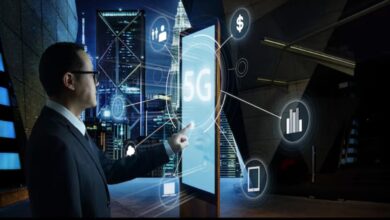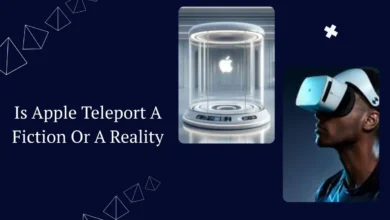Disquantified Contact: Redefining Interactions in the Modern World

In a world where technology increasingly mediates human interactions, the concept of disquantified contact is emerging as a vital lens through which we understand social engagement. Unlike traditional contact or connection, disquantified contact emphasizes interactions that are not measured, tracked, or quantified by metrics. In essence, it’s about the richness of human connection beyond numbers, likes, or analytical dashboards. Let’s dive deeper into what this means, why it matters, and how it’s shaping the way we connect with one another.
Understanding Disquantified Contact
At its core, disquantified contact refers to interactions that are free from the constant scrutiny of data analytics, performance metrics, or algorithmic interpretations. In our current digital era, most forms of contact are quantified—likes, messages, call durations, online interactions, and even face-to-face encounters are often measured or logged in some way. Disquantified contact, however, is deliberately untouched by such measures.
Imagine meeting a friend for coffee and simply enjoying the conversation without recording it on social media, without checking how many minutes you’ve spoken, or worrying about digital impressions. This is disquantified contact. It’s a return to a more authentic, qualitative form of human interaction that prioritizes meaning and presence over measurable outcomes.
Moreover, disquantified contact isn’t anti-technology. Instead, it challenges the pervasive culture of datafication. It’s about reclaiming moments where human presence and emotional depth are central, rather than how efficiently or effectively they can be measured.
The Origins and Evolution of the Concept

Disquantified contact may sound like a modern, tech-centric term, but its roots are surprisingly traditional. Historically, human interactions were naturally disquantified. Letters, face-to-face conversations, and handwritten diaries were never designed to be measured. Relationships thrived on patience, empathy, and genuine engagement rather than analytics.
The evolution of technology shifted this balance. Social media, smartphones, and digital metrics transformed ordinary interactions into a system of measurable engagement. Every chat, like, or comment contributes to an algorithmic understanding of our social lives. In response, disquantified contact emerges as a conceptual antidote—a reminder that the quality of connection often matters more than the quantity.
The term itself started gaining traction among sociologists and digital ethicists who observed the consequences of over-quantifying human interactions. Studies indicated that relationships increasingly experienced “metric fatigue,” where individuals focused more on virtual validation than authentic emotional exchanges. Disquantified contact, therefore, is not just a trend; it’s a conscious philosophical response to a quantified world.
Why Disquantified Contact Matters Today
In a society obsessed with data and performance, disquantified contact offers a much-needed pause. It reminds us that not everything worth experiencing can be measured or scored. The importance of this concept becomes particularly clear when considering mental health, workplace culture, and personal relationships.
Firstly, constant quantification creates stress. Whether it’s worrying about social media impressions, response times in messaging apps, or email metrics at work, people often feel pressured to perform rather than connect. Disquantified contact encourages people to step back from these pressures and embrace interactions for their intrinsic value. It fosters mindfulness and presence, which are increasingly rare commodities in the modern world.
Secondly, disquantified contact nurtures authenticity. When interactions are free from measurement, there is less incentive to curate, optimize, or overthink behavior. People can engage honestly, express themselves without fear of judgment, and build deeper emotional bonds.
Lastly, disquantified contact enhances creativity and innovation. Interactions that are not constrained by metrics allow for exploratory conversations, free-flowing ideas, and genuine problem-solving—something that data-driven environments often stifle.
Practical Examples of Disquantified Contact
Understanding the concept theoretically is one thing, but seeing it in action makes it far more tangible. Here are some scenarios where disquantified contact manifests in daily life:
- Offline Conversations: Talking to someone without checking your phone, counting minutes, or worrying about social media validation.
- Journaling and Letters: Writing to express feelings without anticipating likes or shares.
- Spontaneous Meetups: Gathering with friends or family without planning, scheduling, or documenting it for social feeds.
- Mindful Work Meetings: Having discussions at work that prioritize brainstorming and problem-solving rather than just tracking KPIs.
These examples illustrate that disquantified contact is not about abandoning modern tools but about using them thoughtfully. It’s the art of integrating technology without letting it dominate the essence of human interaction.
The Benefits of Embracing Disquantified Contact
The advantages of disquantified contact extend beyond emotional fulfillment. It has measurable impacts on well-being, social cohesion, and even productivity:
- Enhanced Mental Health: Reduced metric pressure leads to lower stress and anxiety.
- Stronger Relationships: Authentic engagement fosters deeper trust and empathy.
- Improved Focus: Being present without distraction increases cognitive clarity.
- Cultural Enrichment: When humans interact without constraints, cultural and social understanding grows organically.
In essence, disquantified contact reminds us that human interaction is not a competition. The richness of conversation, the warmth of shared laughter, and the subtle gestures of care are all invaluable precisely because they cannot be counted or commodified.
Challenges and Criticisms
Despite its appeal, disquantified contact is not without challenges. One major criticism is that it may seem impractical in highly digital or professional environments. Modern workplaces rely heavily on metrics and KPIs to ensure efficiency, which can conflict with the ethos of unmeasured interaction. Additionally, there is the perception that avoiding quantification may be regressive in a world where data is a critical decision-making tool.
Another challenge is personal discipline. In a society conditioned to measure everything—social media reach, productivity, even steps walked—consciously engaging in disquantified contact requires deliberate effort. For many, the temptation to check, log, or share moments digitally is hard to resist.
Despite these hurdles, the growing awareness of metric fatigue and digital burnout signals that disquantified contact is not only desirable but increasingly necessary.
The Future of Disquantified Contact
Looking ahead, the concept of disquantified contact is poised to influence how we approach technology, work, and social life. It encourages the design of platforms and tools that prioritize human presence over metrics. Think social networks that encourage meaningful conversation rather than likes, or workspaces that value collaborative creativity over constant productivity tracking.
Moreover, the trend reflects a broader cultural shift. As society becomes aware of the limitations of constant measurement, there will likely be greater emphasis on quality, authenticity, and emotional intelligence in interactions.
In a sense, disquantified contact is not just about resisting measurement—it’s about reclaiming humanity in a data-driven world. It’s a subtle but profound revolution, reminding us that sometimes, the most important things in life can’t be counted.
Conclusion
Disquantified contact is more than just a theoretical concept; it is a practical framework for navigating the complexities of modern human interaction. By shifting focus from measurement to presence, from metrics to meaning, it allows us to rediscover the value of genuine connection.
Whether it’s in friendships, family life, workplace communication, or personal reflection, embracing disquantified contact offers a path toward richer, more authentic, and more fulfilling human experiences. In a world dominated by numbers and algorithms, it’s a reminder that the true essence of interaction lies in moments that can’t be quantified—and perhaps, shouldn’t be.





